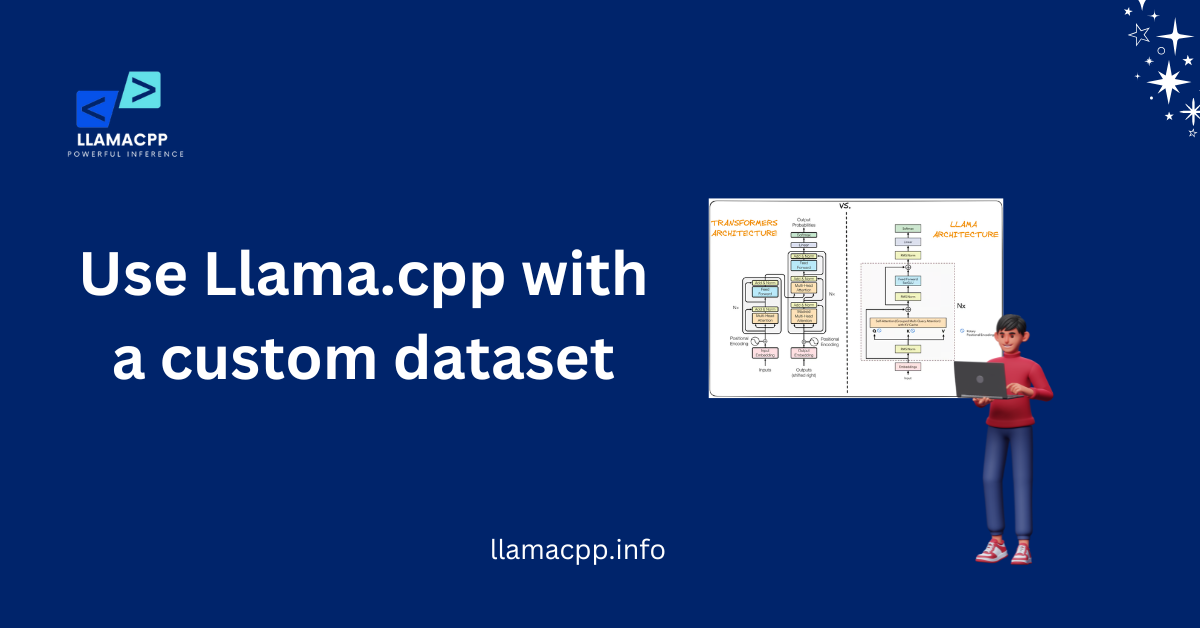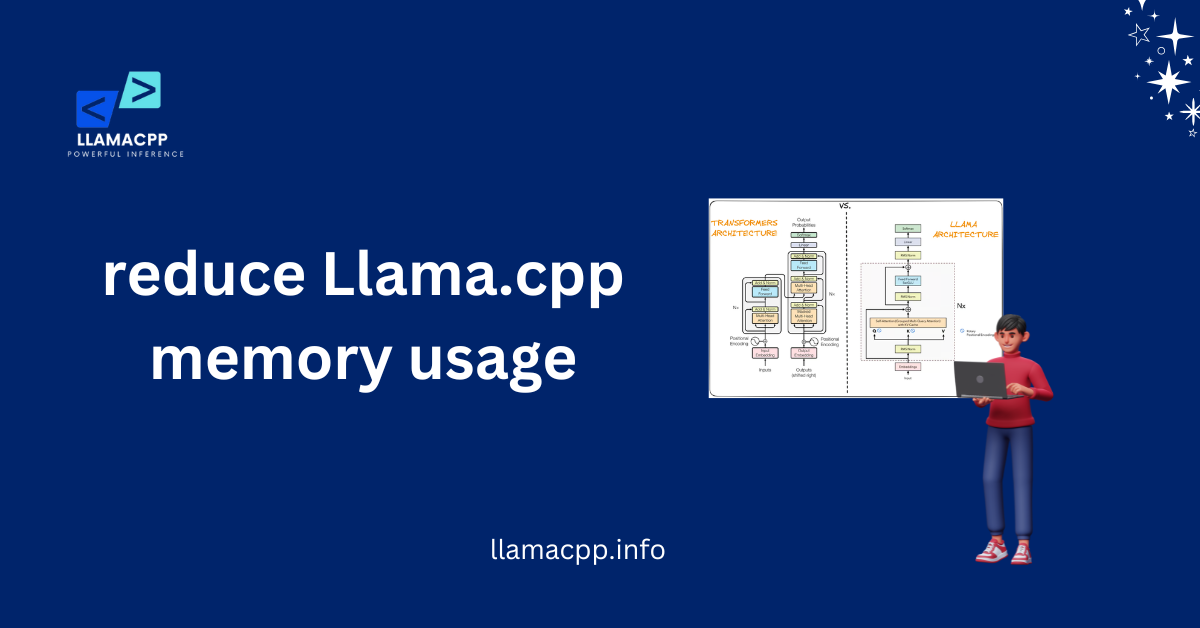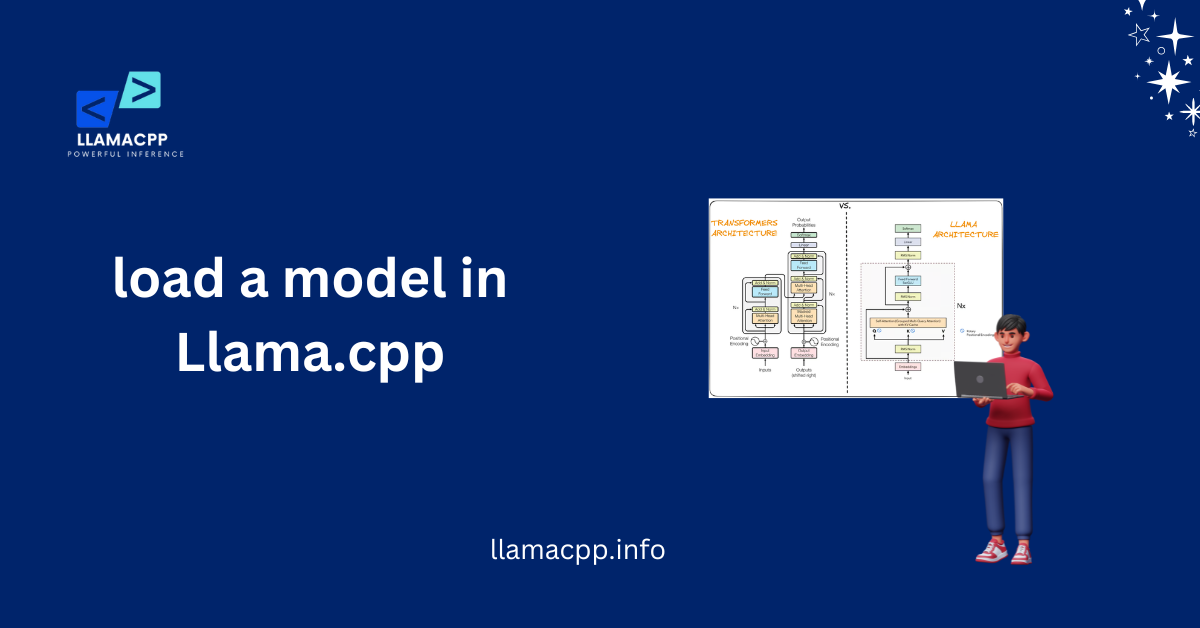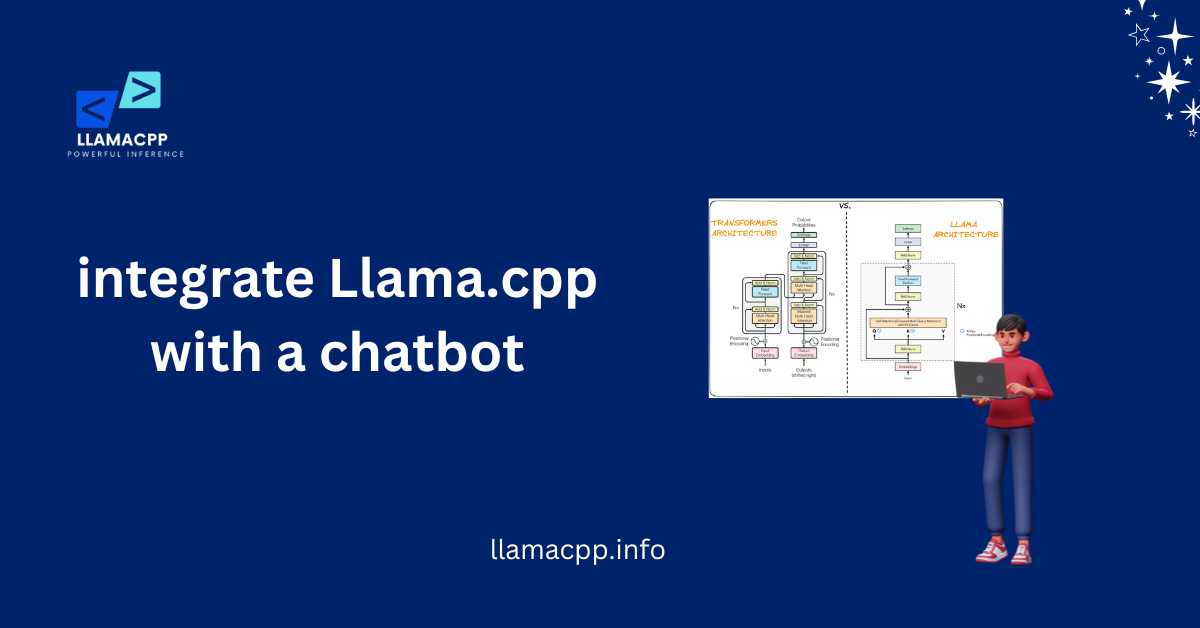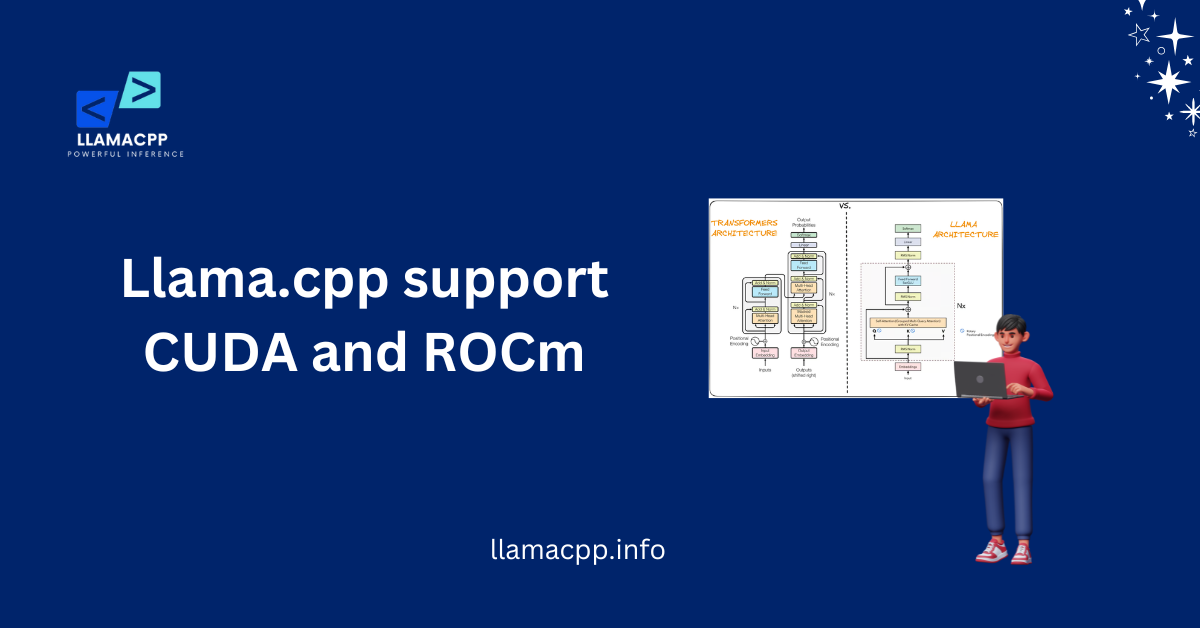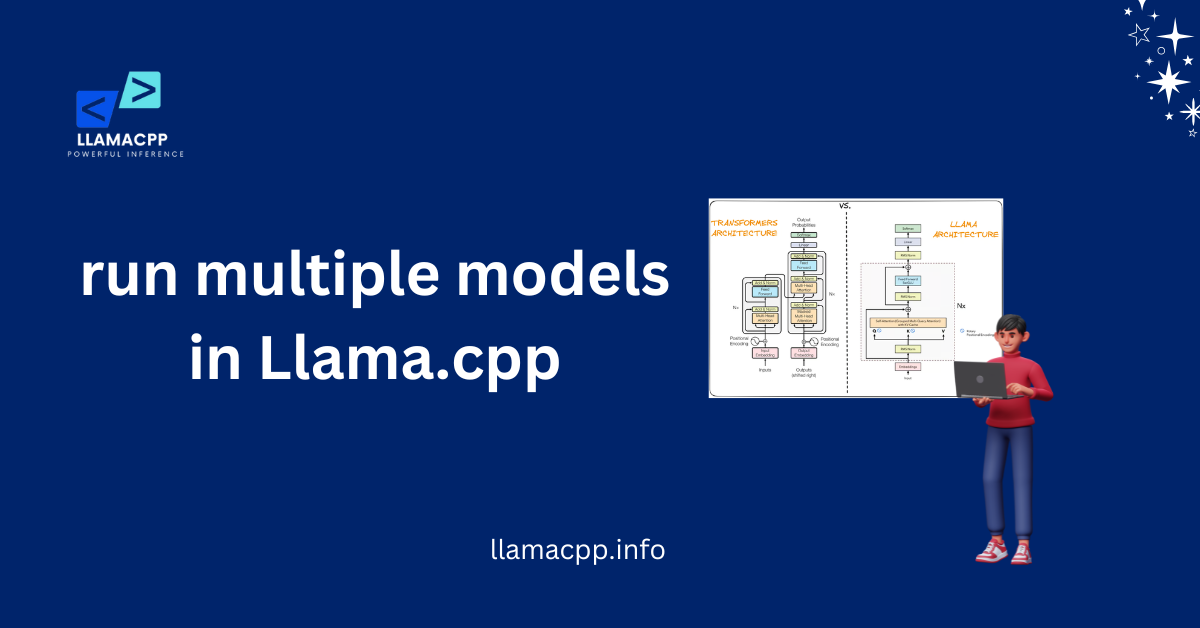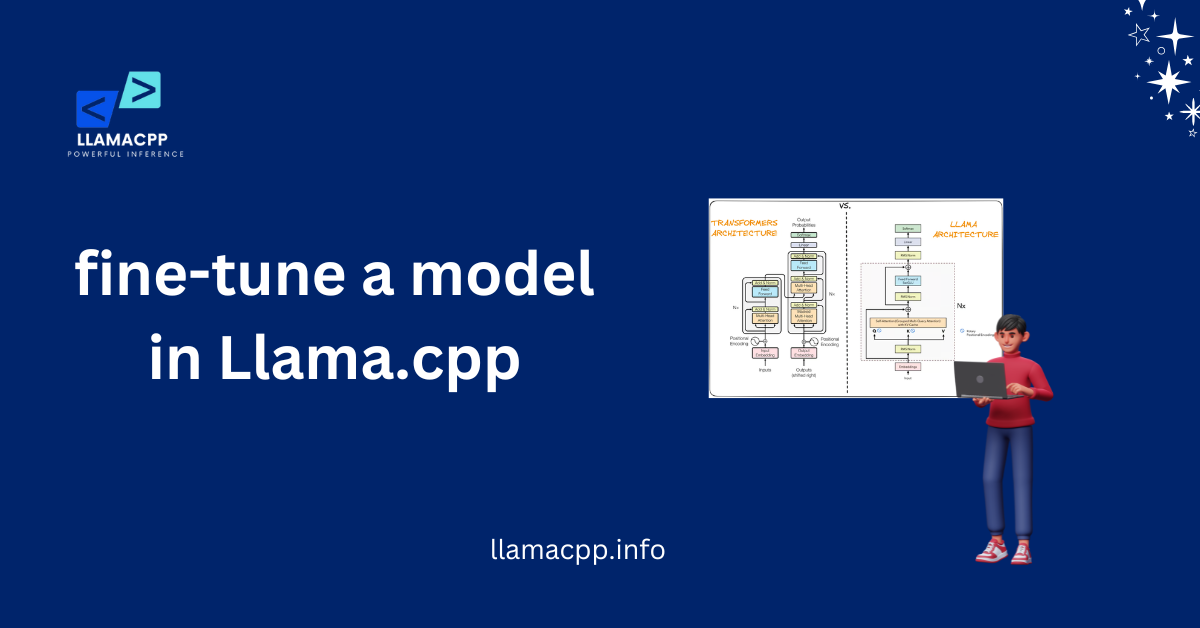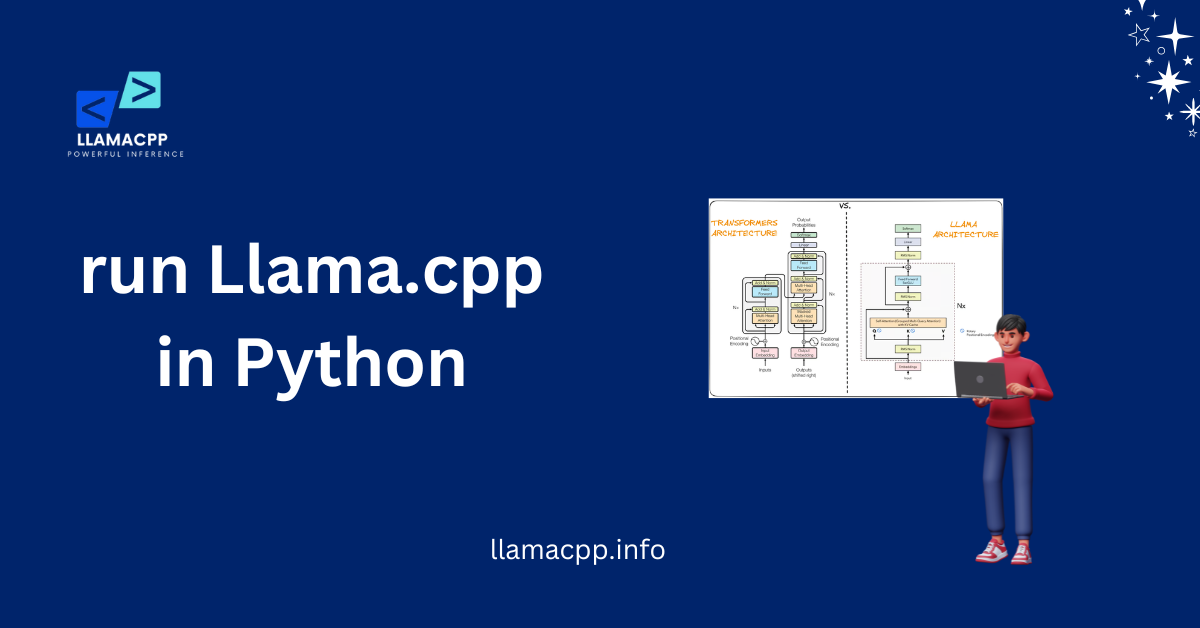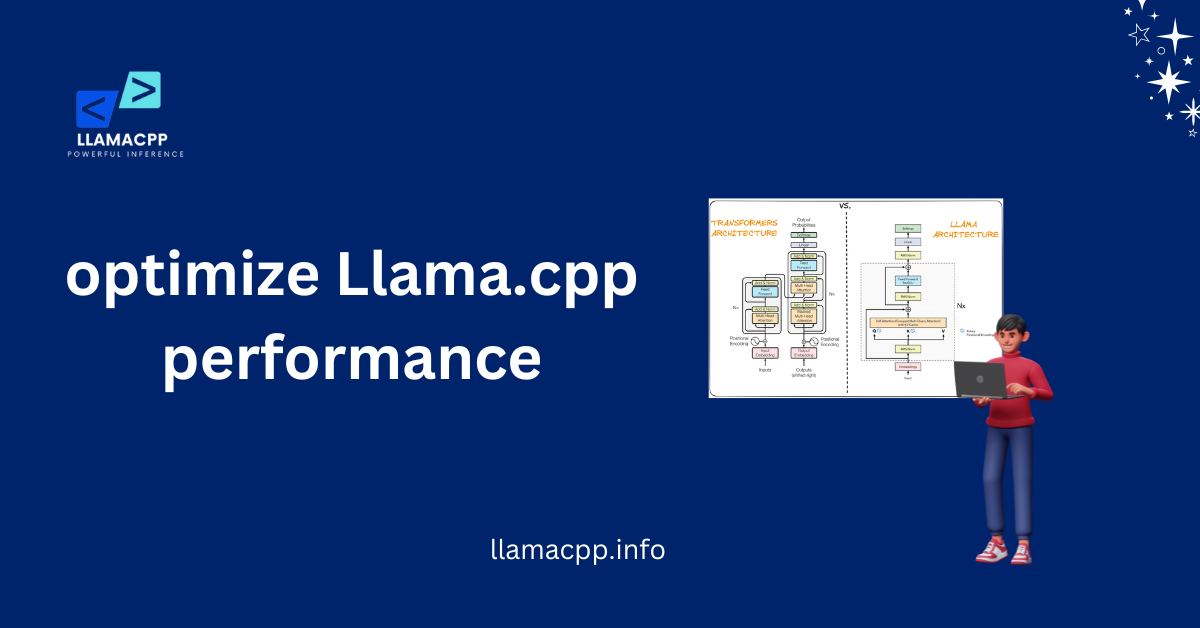Table of Contents
ToggleIntroduction
If you Use Llama.cpp with a custom dataset, you can train an AI model that really gets your data. You can teach it with your dataset instead of using general training data. This makes it more innovative and more valuable. Customizing Llama.cpp helps your AI give correct and meaningful answers, whether you’re working on chatbots, writing content, or doing research. This means better speed, better interactions with other users, and results that are tailored to your needs. The best part? You don’t have to know how to code to do it! With the right approach, you can train your AI without unnecessary complexity.
The open source tool Llama.cpp was made to integrate Llama.cpp with chatbot models quickly. But to get the most out of it, you need to train it on data that fits the needs of your project. It might seem complicated to set up the environment, prepare your information, and tweak the model, but don’t worry! In this book, everything is broken down into manageable steps. By the end, you will know how to change Llama.cpp to get the best results.
Why Should You Change Llama.cpp to Fit Your Dataset?
- Customizing Llama.cpp for your dataset ensures the model learns patterns specific to your data.
- Improves prediction accuracy and relevance by aligning model behavior with your content.
- Reduces unnecessary computations by focusing on features present in your dataset.
- Enhances model efficiency, allowing faster training and inference.
- Prevents overfitting to unrelated data by tailoring training to your domain.
- Enables better handling of unique vocabularies or specialized terminology.
- Supports integration with existing workflows and data pipelines for smoother deployment.
- Allows fine-tuning of hyperparameters to achieve optimal performance for your tasks.
- Makes debugging and error analysis easier by limiting variability from unrelated data.
- Facilitates experimentation with different model configurations to find the most effective setup.
Getting your space ready
Before you can use Llama.cpp with a unique dataset, you need to make sure your system meets the standards and install the right tools. A good setup keeps things running smoothly and prevents mistakes during training.
First, you need a machine that works with it and has enough processing power. You also need to install Python, Git, and the necessary tools. Once everything is set up, you can start getting your information ready. A well prepared environment is helpful for training AI models.
1. Put together the tools you need
To use Llama. Cpp with a unique dataset, you need to install Python, Git, and CMake. These tools make it easier to run the AI model and keep track of the dependencies.
Once installed, update the necessary packages. Keeping everything up to date makes sure that it works better and stays stable.
2. Make sure the system works with it
To use Llama.cpp with a unique dataset, your computer needs to meet specific specs. Having a good GPU and enough RAM makes things run faster.
If you run AI models on a weak machine, they might slow down or crash. To avoid these kinds of problems, check compatibility.
3. Prepare Your Dataset
Get your data together and clean it up before you train. Make sure the data is organized and valuable before you use Llama.cpp with a custom dataset.
Getting rid of mistakes, duplicates, and unnecessary information improves training. AI works better when the information is well-prepared.
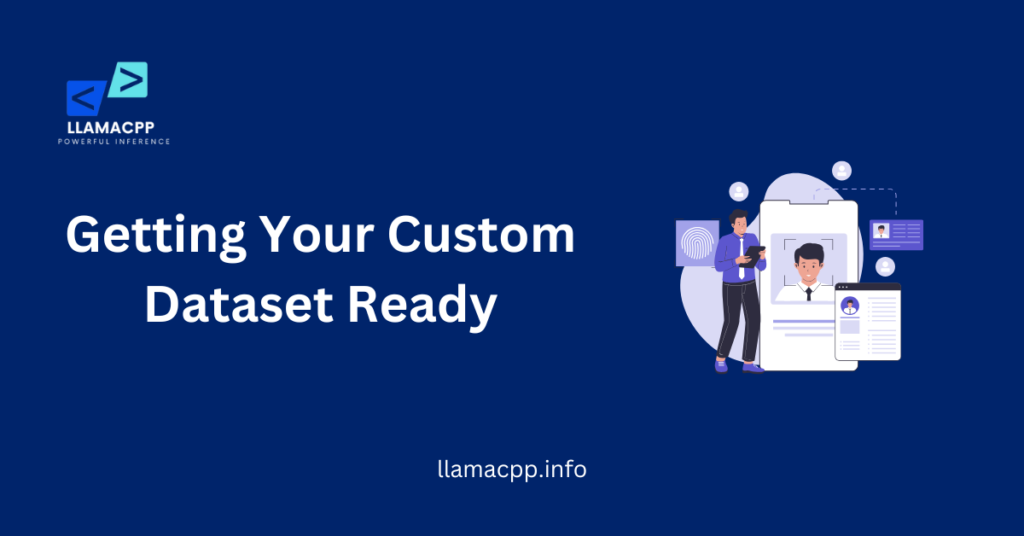
Getting Your Custom Dataset Ready
- Collect and organize your data in a clean, structured format suitable for model training.
- Remove duplicates, errors, and irrelevant information to improve dataset quality.
- Split the dataset into training, validation, and test sets to evaluate model performance effectively.
- Preprocess text or numerical data by normalizing, tokenizing, or encoding as required by Llama.cpp.
- Ensure consistent formatting and labeling to avoid errors during training and inference.
- Verify that your dataset size is sufficient to achieve meaningful learning without overfitting.
1. Gather information and set it up
Find good data sources before you use Llama.cpp with a unique dataset. Make sure it is related to your job or field.
Could you put the data in a structured format after getting it? This would make it easier for the AI to learn and work better.
2. Get rid of and clean up errors
A good collection should not contain a single mistake. When you use Llama.cpp with a custom dataset, incorrect or repeated data can affect speed.
Get rid of unnecessary aren’t, fix mistakes, and make the formatting consistent. This will make training faster and the model more accurate.
3. Convert Data into a Compatible Format
- Transform your dataset into the format required by Llama.cpp, such as JSON, CSV, or tokenized text.
- Ensure consistent encoding (e.g., UTF-8) to avoid errors during loading or training.
- Preprocess text data by cleaning, normalizing, and tokenizing to match model expectations.
- Verify that all input features align with the model’s architecture and training requirements.
- Test a small subset of the converted data to confirm compatibility before full scale training.
Putting the dataset together with Llama.cpp
Once your information is ready, the next step is to load it into the model. Suppose you use a custom dataset with Llama.cpp, you need to make sure the AI can read and process it properly. This step is crucial for training to go smoothly and get accurate results.
You will set up your information, connect it to Llama.cpp, and check to see if everything works right. A properly integrated dataset helps AI learn, making answers more useful and relevant.
1. Make the dataset compatible by formatting it
To use Llama. Cpp with a separate dataset, you need your data in a structured file like JSON, CSV, or TXT. Llama.cpp scans these formats.
Carefully review the wording. Organizational mistakes can lead to problems during training, while a well-formatted collection guarantees better results.
2. Put the dataset into Llama.cpp.
Now, you need to connect your information to the model. To use a custom dataset with Llama.cpp, put the file in the right place, and change the script so it can read it.
Running a test command will ensure that the dataset is loaded correctly. If the file path and layout are incorrect, recheck them.
3. Make sure the data sets work together.
After adding the information, testing is essential. When you use a custom dataset with Llama, cpp, you should test queries to see if the AI responds appropriately.
If the answers aren’t correct, fix the dataset and train again. Testing ensures your AI model learns properly and provides accurate answers.
Making the Model Perfect
- Fine tune the model on your custom dataset to align predictions with your specific needs.
- Adjust hyperparameters such as learning rate, batch size, and context length for optimal performance.
- Implement regularization techniques to prevent overfitting and improve generalization.
- Use mixed precision training (FP16/BF16) to balance speed and memory usage without losing accuracy.
- Monitor training metrics closely and iterate on the dataset or model settings as needed.
- Apply gradient checkpointing to train larger models efficiently on limited hardware.
- Evaluate the model on validation and test sets regularly to measure accuracy and reliability.
- Incorporate LoRA or other low rank adaptation techniques to efficiently fine tune critical layers.
- Test different model architectures or layer configurations to find the most effective setup.
- Continuously update the dataset and retrain periodically to maintain model performance over time.
Checking the ModeModel’sformance
As soon as you use Llama.cpp with a unique dataset, you need to make sure it works well. A model might seem well-trained, but if it doesn’t provide accurate answers, it needs adjustments. Validation ensures that the AI gets your data and uses it properly.
Testing helps you find mistakes, make responses better, and make things work better generally. You can make an AI that works well and gives accurate results by giving it different tests, comparing the results, and making changes. A strong validation method prevents inconsistencies and ensures the AI performs at its best.
1. Test with Sample Queries
- Run the model using a set of representative sample queries to evaluate its responses.
- Check for accuracy, relevance, and consistency in the model’s outputs.
- Identify areas where the model may misunderstand or generate incorrect answers.
2. Compare the results with what you expected.
- Evaluate the model outputs against your anticipated or benchmark results to measure accuracy.
- Identify discrepancies between expected and actual responses to detect weaknesses in the model.
- Analyze patterns in errors to determine if they stem from data, model configuration, or training issues.
3. Make any changes that are needed
- Modify model hyperparameters such as learning rate, batch size, or context length to improve performance.
- Update or clean the dataset if errors or inconsistencies are affecting results.
- Apply additional fine-tuning techniques like LoRA or gradient checkpointing for better accuracy.
Putting the customized model into us
Now that your model has been trained and proven, it’s easy to use it. When you use Llama.cpp with a custom dataset, deployment makes the AI available for real-world tasks. A well-deployed model ensures that everything works smoothly and efficiently.
Setting up the right environment, adding the model to applications, and monitoring its success are all parts of the process. When used correctly, a model gives accurate results and gets better over time as it is updated.
1. Deciding on the Best Way to Deploy
It is possible to use Llama.cpp with a custom dataset in deployment in several different ways. It can be run on a desktop computer, a server in the cloud, or built into an app.
You decide which method is best. This method works well for small tasks. For more prominent uses, cloud deployment ensures that everything is accessible and can be expanded.
2. Integrating into Applications
When you use Llama.cpp with a unique dataset, it’s easy to connect it to other programs. It can be added to chatbots, automation tools, or systems for data analysis.
APIs help in linking the model with software apps. A smooth integration ensures users get accurate answers quickly.
3. Monitoring and updating the model:
Deployment doesn’t happen when it’s up. When you settings for Llama.cpp inference with a unique dataset, you need to monitor it constantly to ensure accuracy.
Check performance regularly and change the model as needed. Adding new data and refining training ensures that AI keeps growing over time.
Conclusion
Using Llama. With a custom dataset, you can create an AI model that understands and responds correctly to your needs. Setting up the environment, training, validating, and releasing are all essential steps in creating a working AI system. Your model will keep getting better over time as long as you keep it tuned up and updated.
Setting up a well-trained AI model is not only about the technology, it’s also about making sure it works correctly and quickly. You can improve its efficiency by testing and tweaking it over time. Whether for study, automation, or business applications, customizing Llama.cpp with a custom dataset promises better AI-driven solutions tailored to your goals.
FAQs
1. What is the goal of using Llama.cpp with a custom dataset?
Using a custom dataset with Llama.cpp helps train the model with specific data, which makes its answers more correct and valuable for your needs. This customization makes performance better for particular jobs.
2. How do I get my information ready for Llama.cpp?
Clean and organize your data correctly so that you can use Llama.cpp with a custom dataset. For better training results, ensure consistency, eliminate mistakes, and organize it so that the model can easily understand it.
3. Can I use the model I trained on more than one platform?
Yes! Depending on how you plan to use it, you can put your personalized Llama.cpp model on local computers and servers in the cloud or add it to apps through APIs.
4. How do I check that my model works?
As part of validation, sample queries are used to test the system, answers are compared to what was expected, and any problems are fixed. This ensures that your model’s answers are reliable and correct.
5. How often should I make changes to my custom model?
Performance improves with regular changes. When you use a custom dataset with Llama.cpp, monitor the results, retrain with the new data, and change the settings as needed to maintain high accuracy.

